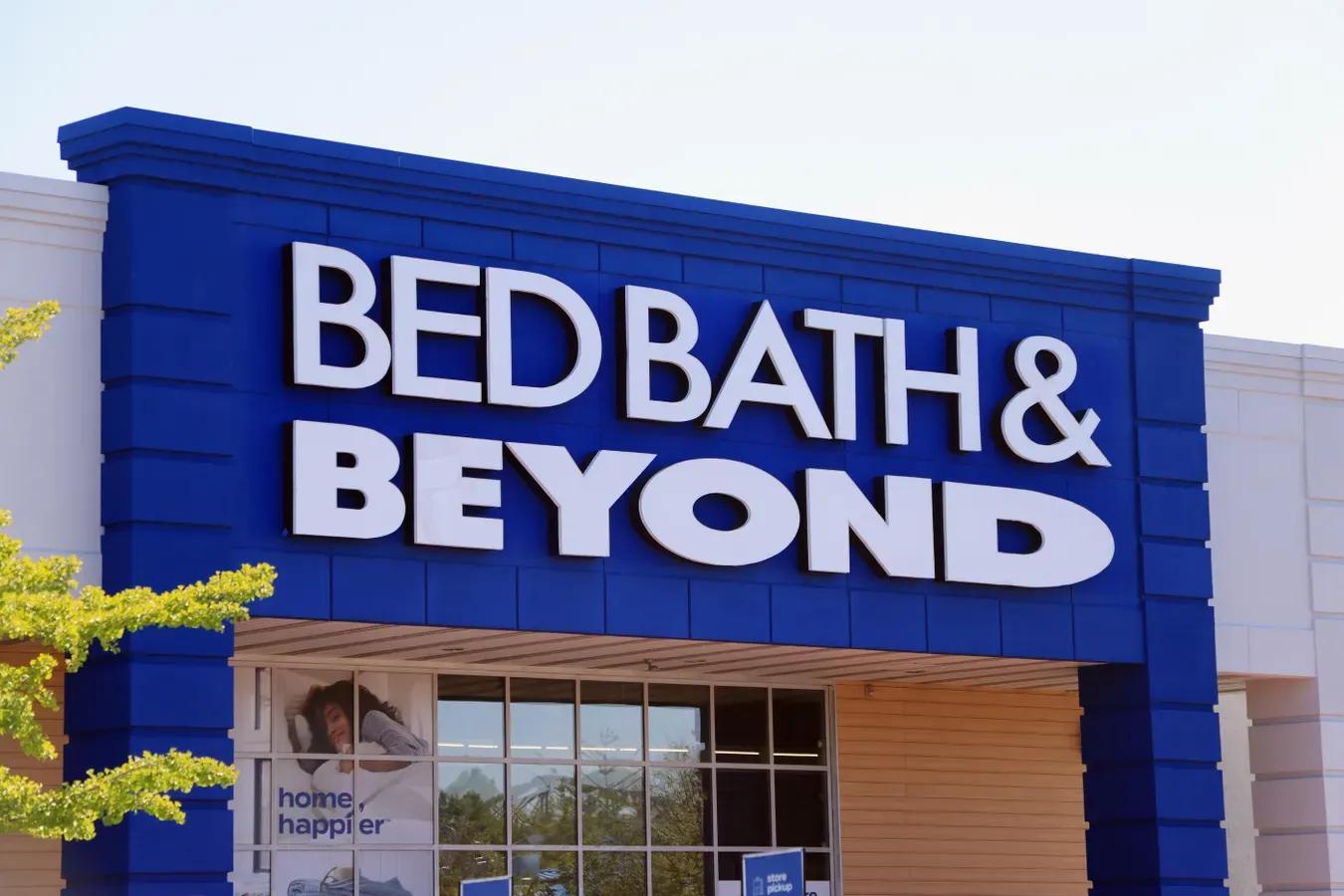Overstock Acquires Bed, Bath & Beyond: A Strategic Move
Overstock's acquisition of Bed Bath & Beyond marks a significant shift in the retail landscape, combining Overstock's e-commerce strengths with Bed Bath & Beyond's brand legacy.

The retail landscape has seen significant shifts in recent years, with traditional brick-and-mortar stores facing increasing competition from e-commerce giants. One of the most notable developments in this space is Overstock's acquisition of Bed, Bath, and Beyond, a move that marks a new chapter for both brands. Let's explore the history of Overstock and Bed, Bath, and Beyond, delve into the reasons behind the acquisition, and examine the strategic decision to retain the Bed Bath and Beyond brand for the business.

Key Facts About the Acquisition
- Overstock’s Acquisition: Overstock.com paid $21.5 million for Bed, Bath & Beyond’s intellectual property and digital assets in June 2023.
- Rebranding: As of June 2023, Overstock’s website redirects to BedBathAndBeyond.com, marking a complete rebranding under the Bed, Bath, and Beyond name.
- CEO’s Perspective: Overstock CEO Jonathan Johnson emphasized that the acquisition aimed to combine Overstock’s business model with Bed, Bath, and Beyond’s recognizable brand. Johnson noted that Overstock had long admired the Bed, Bath, and Beyond name, which he described as an "iconic brand people loved."
- Product Expansion: The rebranded site has added over 60,000 products, and Overstock is reinstating up to $50 in unused loyalty rewards points for former Bed, Bath & Beyond customers.
- Potential Future Developments: While there are no immediate plans to reopen brick-and-mortar Bed, Bath & Beyond stores, Johnson hinted at the possibility in the future.
Overstock: From Surplus to E-Commerce Giant
Founding and Early Years
Overstock was founded in 1999 by Patrick M. Byrne as an online retailer focused on selling surplus and returned merchandise at discounted prices. The company quickly gained traction by offering consumers a wide range of products at lower prices than traditional retail outlets. Overstock’s model capitalized on excess inventory from manufacturers, providing a marketplace for goods that might otherwise have gone unsold.

Adapting and Expanding
Over the years, Overstock evolved from its surplus roots into a broader e-commerce platform, offering a vast selection of home goods, furniture, decor, and more. The company expanded its product offerings to include everything from electronics to jewelry, positioning itself as a one-stop shop for online shoppers. Overstock’s growth was fueled by its ability to adapt to changing market conditions, embracing technological advancements and expanding its logistics network to improve customer experience.
Staying Relevant in a Competitive Market
Before the acquisition of Bed, Bath, and Beyond, Overstock had established itself as a major player in the online retail space, though it faced stiff competition from industry giants like Amazon and Wayfair. Overstock’s ability to pivot and diversify its product range kept it relevant, but the company continually sought ways to differentiate itself and expand its market share.
Bed, Bath, and Beyond: A Legacy of Home Goods
Origins and Initial Success
Bed, Bath, and Beyond was founded in 1971 by Warren Eisenberg and Leonard Feinstein. Initially, the company operated under the name Bed 'n Bath, with small stores averaging around 5,000 square feet, and a focus on selling bed linens and bath accessories. However, it quickly expanded its product range to include a variety of home goods, catering to the growing demand for quality home furnishings. By the 1980s and 1990s, Bed, Bath, and Beyond had become a household name, known for its vast selection of products and customer-friendly policies.
Dominating the Market
Throughout the 1990s and early 2000s, Bed, Bath, and Beyond experienced rapid growth, opening hundreds of stores across the United States and establishing itself as a leader in the home goods retail market. The company’s success was built on its extensive product range, competitive pricing, and a strong focus on customer service. Bed, Bath, and Beyond became synonymous with quality home goods, attracting a loyal customer base.

Challenges and Decline in the Digital Era
Despite its early success, Bed, Bath, and Beyond began to face significant challenges in the late 2000s and 2010s. The rise of e-commerce, particularly the growth of Amazon and other online retailers, began to erode Bed, Bath, and Beyond’s market share. The company struggled to adapt to the digital age, with its online presence lagging behind competitors. Additionally, changing consumer behaviors, including a shift toward experiential shopping and demand for faster, more convenient purchasing options, further impacted the company’s performance. By the late 2010s, Bed, Bath, and Beyond was experiencing declining sales and profitability, leading to store closures and restructuring efforts.
In 2019, amid mounting pressure from activist investors due to declining sales and market share, Eisenberg and Feinstein stepped down from their positions as co-chairmen, marking the end of an era. Their departure was part of a broader restructuring of the company’s board, aimed at revitalizing the brand in the face of significant market upheaval.
Why Overstock Acquired Bed, Bath, and Beyond
Seizing a Strategic Opportunity
The acquisition of Bed, Bath, and Beyond presented a strategic opportunity for Overstock to expand its market presence and leverage the brand recognition of a well-known retail name. For Overstock, this move was not just about acquiring assets; it was about tapping into the existing customer base and legacy of Bed, Bath, and Beyond. The acquisition allowed Overstock to diversify its offerings and strengthen its position in the home goods market.
Leveraging Bed, Bath, and Beyond’s Brand Equity
Bed, Bath, and Beyond, despite its struggles, still held significant brand equity. The name was instantly recognizable, and many consumers still associated it with quality home goods and reliable customer service. By acquiring Bed, Bath, and Beyond, Overstock gained access to this brand equity, which could be leveraged to attract both former customers of Bed, Bath, and Beyond and new shoppers.
Creating E-Commerce Synergies
One of the key reasons for the acquisition was the potential synergies between Overstock’s e-commerce expertise and Bed, Bath, and Beyond’s brand. Overstock’s well-established online platform could be used to revitalize the Bed, Bath, and Beyond brand, offering a seamless shopping experience that combined the strengths of both companies. This integration aimed to create a more robust and competitive online presence, capable of challenging other major players in the home goods market.
The Decision to Retain the Bed, Bath, and Beyond Brand
Choosing Bed, Bath, and Beyond Over Overstock
Given Overstock’s established name in the online retail market, the decision to operate under the Bed, Bath, and Beyond brand might seem surprising. However, this move was strategically sound. While Overstock is known for discounts and surplus goods, Bed, Bath, and Beyond has a reputation for quality and reliability in home furnishings. Retaining the Bed, Bath, and Beyond brand allows the company to target a broader audience, appealing to consumers who may not have previously shopped at Overstock.
Maintaining and Building Consumer Trust
For many consumers, Bed, Bath, and Beyond represents a trusted source for home goods. By continuing to use the Bed, Bath, and Beyond brand, Overstock can maintain the trust and loyalty of these customers, offering them the same quality products and service they expect, now enhanced by Overstock’s e-commerce capabilities.
Building on Bed, Bath, and Beyond’s Legacy
The decision to retain the Bed, Bath, and Beyond brand also allows Overstock to build on the legacy of a well-established retail name. By combining Bed, Bath, and Beyond’s strong brand identity with Overstock’s technological infrastructure, the company can create a more powerful and competitive presence in the market.
Conclusion: What This Means for Shoppers
The acquisition of Bed, Bath, and Beyond by Overstock represents a significant shift in the retail landscape, bringing together two well-known names in home goods under one roof. This move is not just about expanding market share; it’s about revitalizing a beloved brand and integrating it into the digital age.
For savvy shoppers looking to make the most of their home goods purchases, tools like Spoken can help you navigate the options and compare prices across different retailers, ensuring you get the best value for your money as these two brands merge their strengths.

Geoff Abraham
Co-founder & President of Spoken
Geoff is the co-founder and President of Spoken. He is a Dad. He holds a BA from UT Austin (Plan II) and an MBA from Stanford. Geoff has built several successful businesses, including a bicycle taxi business in San Francisco which he ran for 10 years with his wife, Mimosa. He is an executive coach, and he actively invests in seed-stage startups via The Explorer Fund.
Read more